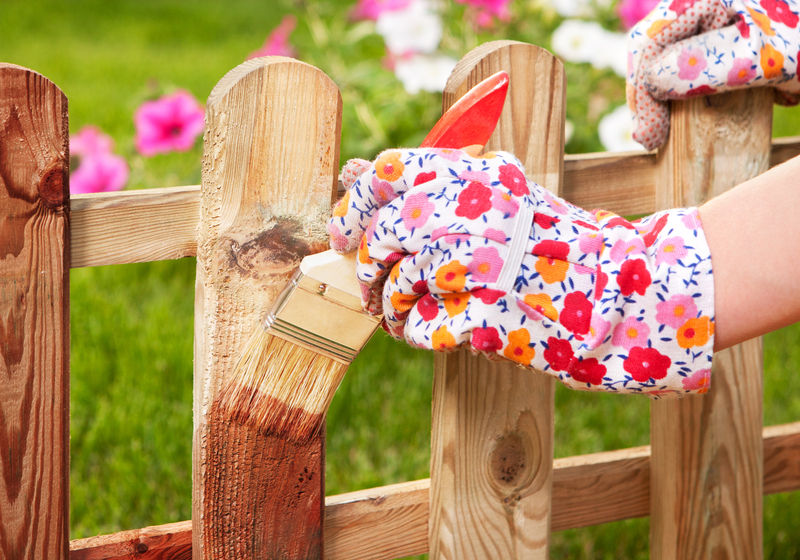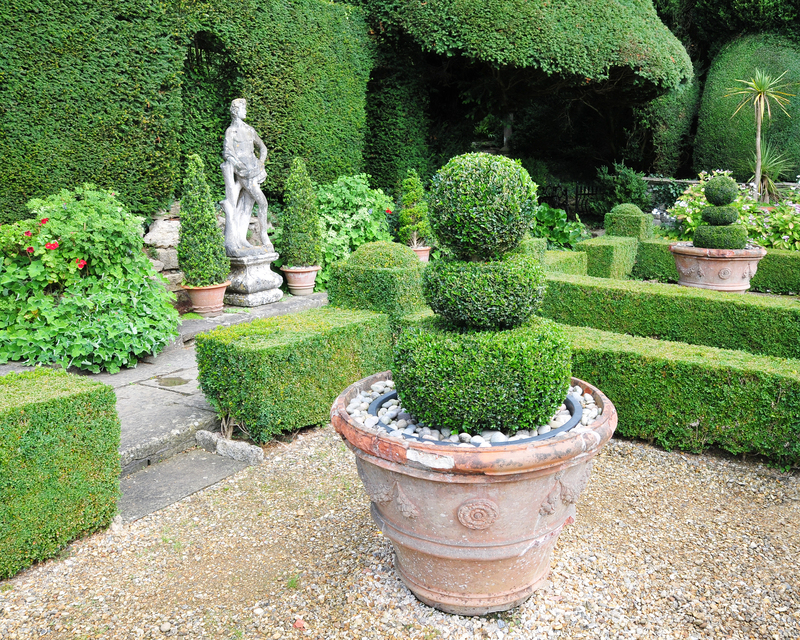Thriving Tropicals: Cultivating Exotic Plants In The British Garden
Are you dreaming of a lush, exotic paradise in your own backyard? Many British gardeners believe tropical plants are out of reach due to the unpredictable UK climate, but cultivating exotic plants in British gardens has never been more possible. Advances in horticulture, coupled with a growing range of hardy tropical plant species, mean you can bring the bold colors and dramatic shapes of the tropics to your British garden--all with the right knowledge, care, and creativity.
Why Grow Exotic and Tropical Plants in the British Garden?
The trend for thriving tropicals isn't just about mimicking a rainforest for visual appeal--exotic and unusual plants bring numerous benefits to UK gardens:
- Visual Drama: Large leaves, vibrant flowers, and unique textures create instant impact and interest.
- Biodiversity: Uncommon plants may attract unusual pollinators and foster richer garden ecosystems.
- Personal Escape: A tropical corner provides a tranquil retreat--your personal oasis at home.
- Resilience: Many exotic varieties are surprisingly robust, with some even withstanding British winters.
With careful tropical plant cultivation, even modest gardens can feel like an escape to Bali or Barbados. Read on to discover how to craft and maintain your own lush paradise.

Understanding the Challenges of Growing Tropical Plants in the UK
While tropical gardening in Britain is possible, it presents unique challenges. The predominant obstacles include:
- Temperature: Most tropical plants thrive in daytime temperatures above 20?C and suffer in prolonged cold.
- Humidity: The UK's cool, dry winters and relatively low humidity can stress moisture-loving exotics.
- Winter Wetness: Saturated soils can rot roots of tropical species not adapted to long wet periods.
- Light Levels: Short, often cloudy winters reduce available light, affecting growth.
However, by choosing the best species, adapting planting locations, and taking advantage of microclimates, UK gardeners can overcome these barriers.
Choosing the Right Exotic and Tropical Plants for Your British Garden
Some tropical plants are tougher than they look. For the British climate, select varieties renowned for their cold tolerance or adaptability. Here are top picks for building a tropical style garden in the UK:
1. Hardy Bananas (Musa basjoo and Musa sikkimensis)
- Appearance: Huge, paddle-shaped leaves for instant jungle effect.
- Hardiness: Rots crowns below -5?C if unprotected, but well-insulated roots survive colder spells.
- Care: Plant in sheltered spot; protect base with mulch in winter.
2. Cannas
- Appearance: Bold leaves with vibrant, flame-colored flowers.
- Hardiness: Can survive mild winters; tubers best lifted and stored in frost-prone regions.
- Care: Enjoys sun and rich, moist soil.
3. Tree Ferns (Dicksonia antarctica)
- Appearance: Prehistoric look with lush, arching fronds on trunk-like stems.
- Hardiness: Withstand -10?C if trunk is protected from frost.
- Care: Keep roots moist; wrap crown in fleece during winter.
4. Trachycarpus Fortunei (Windmill Palm)
- Appearance: Fan-shaped, architectural leaves; grows up to 10 metres.
- Hardiness: Tolerates down to -15?C; ideal for UK gardens.
- Care: Prefers well-drained soil, sun/part shade.
5. Tetrapanax papyrifer (Rice-paper Plant)
- Appearance: Spectacular, hand-shaped leaves up to 60cm across.
- Hardiness: Survives to -10?C with root mulch; may need spring pruning.
- Care: Rapidly grows in sun or shade; may need controlling.
More Notable Exotics for British Gardens:
- Ginger lilies (Hedychium)
- Yucca and Cordyline species
- Eucalyptus gunnii (cider gum)
- Agapanthus and Crocosmia
- Colocasia (elephant ears)
- Bamboo (clump-forming, non-invasive varieties)
By incorporating these hardy tropical garden plants, you can create a vibrant, low-maintenance display that flourishes in British conditions.
Designing a Tropical Garden in the UK
Designing your own British tropical garden involves more than plant choice; layout and layers are equally crucial. Here are some expert tips:
Layering for a Jungle Effect
- Tall Plants: Use bananas, tree ferns, and palms for height.
- Mid-Level: Fill mid-zone with cannas, gingers, bamboos, and Tetrapanax.
- Ground Level: Underplant with hostas, heucheras, hardy ferns, and bold-leaved annuals.
Creating Microclimates
- Walls and Fences: Provide shelter and reflect heat, crucial for marginally hardy species.
- Ponds: Boost humidity; allow for moisture-loving tropicals and semi-aquatics.
- Mulches: Gravel and bark conserve soil warmth and moisture.
Inspired Garden Features
- Pathways: Winding paths create mystery and mimic tropical exploration.
- Bold Containers: Showcase exotics like cannas and colocasia on terraces and patios.
- Water Features: Small fountains or rills add to the sensory experience.
Best Practices: Cultivating Exotic Plants in the British Garden
Successful tropical plant cultivation in the UK is all about preparation and care. Here's how to help exotic plants thrive in your British garden:
1. Location Is Key
- Choose south or west-facing sites for sun worshippers.
- Shelter from cold winds using fences, buildings, or dense hedging.
- Utilize warm spots near walls or patios for the tenderest plants.
2. Soil Preparation
- Improve drainage using grit, compost, or raised beds.
- Feed with organic matter; many tropicals are hungry plants.
- Test pH; some exotics prefer slightly acidic soils, others neutral.
3. Watering & Feeding
- Water deeply during summer, especially for container-grown plants.
- Boost humidity with regular misting and by grouping pots together.
- Feed regularly with balanced or specific fertilizers during active growth.
4. Mulching and Frost Protection
- Mulch with bark or straw in autumn to insulate roots.
- Wrap stems and crowns with fleece, horticultural fabric or bubble-wrap in cold spells.
- Lift non-hardy bulbs and rhizomes, store frost-free over winter.
5. Pests and Diseases
- Watch for slugs, snails, vine weevils, and red spider mites.
- Use barriers, biological controls, or appropriate organic treatments.
- Check for fungal infections during wet spells; ensure good air flow.
Overwintering Tropicals: How to Keep Exotics Alive Year-Round
British winters test even the toughest exotics. Overwintering tropical plants is often the difference between success and disappointment. Here's your step-by-step guide:
- Assess Hardiness: Check each plant's minimum temperature tolerance and your garden's microclimate.
- Apply Mulch: Add thick layers to base of bananas, cannas, or gingers late autumn.
- Wrap Plants: Protect tender crowns (e.g., tree ferns) with horticultural fleece or straw-filled hessian sacks.
- Lift & Store: Remove cannas, colocasias, dahlias, and store in compost or sand in a frost-free shed.
- Pot & Move: Containerized exotics like citrus and bougainvillea should come indoors or into conservatories from October.
- Maintain Moisture: Check stored tubers and roots periodically; don't let them dry out or rot.
With attention to end-of-season care, your precious exotic garden plants will safely re-emerge each spring to continue their tropical display.
Easy Tropical Garden Ideas for Small and Large Spaces
No matter your garden size, you can enjoy a slice of the exotic with creative tropical garden designs:
Small Space Solutions
- Patio Planters: Use bold containers with cannas, bananas, and gingers for movable jungles.
- Tropical Balcony: Shade-loving ferns, colocasia, and streptocarpus create lush vertical drama.
- Curtain Planting: Grow bamboo and fatsia along fences for instant privacy and greenery.
Large Garden Features
- Jungle Walkway: Interlace tall plants with winding paths for immersive experiences.
- Palm Island: Cluster trachycarpus palms with underplanted exotics for a show-stopping focal point.
- Water's Edge: Develop lush planting around a pond with gunnera, reedmace, and irises.
Pro Tips: Mistakes to Avoid When Cultivating Tropical Plants in the UK
- Don't Underestimate the Cold: Always protect tender perennials and young exotics, especially during sudden cold snaps.
- Avoid Waterlogging: Plant where excess water can drain--raised beds are especially useful for tropical beds.
- Don't Neglect Feeding: Exotic plants are vigorous growers--regularly supplement nutrients for lush growth.
- Be Realistic: Not every species will tolerate British conditions; focus on those that are proven performers, especially if you're new to exotic gardening.

Frequently Asked Questions: Exotic and Tropical Gardening in Britain
Can I grow tropical plants outdoors in the UK year-round?
Yes, some exotics like Trachycarpus, Fatsia japonica, and Musa basjoo are hardy with basic protection. More tender species need lifting or indoor overwintering.
What is the hardest tropical plant for British gardens?
Trachycarpus fortunei and Tetrapanax papyrifer are among the hardiest large leaved exotics that can survive most UK winters unscathed.
How do I increase humidity for tropicals?
Group plants, use water features, or mist regularly to raise humidity, especially in greenhouses or indoor jungle displays.
Will tropical gardens attract pests?
Unusual plants may deter some native pests, but watch for slugs and spider mites on young and indoor exotics.
Conclusion: Embrace the Exotic in Your British Backyard
With patience, protection, and a bit of experimentation, cultivating thriving tropicals in the British garden is both achievable and rewarding. Start with hardy varieties, employ clever design and care techniques, and soon you'll be basking in your own lush, exotic retreat--no plane ticket required!
Ready to create your own British tropical oasis? Explore specialist nurseries, visit local exotic gardens for inspiration, and start planning your vibrant, jungle-inspired sanctuary today.